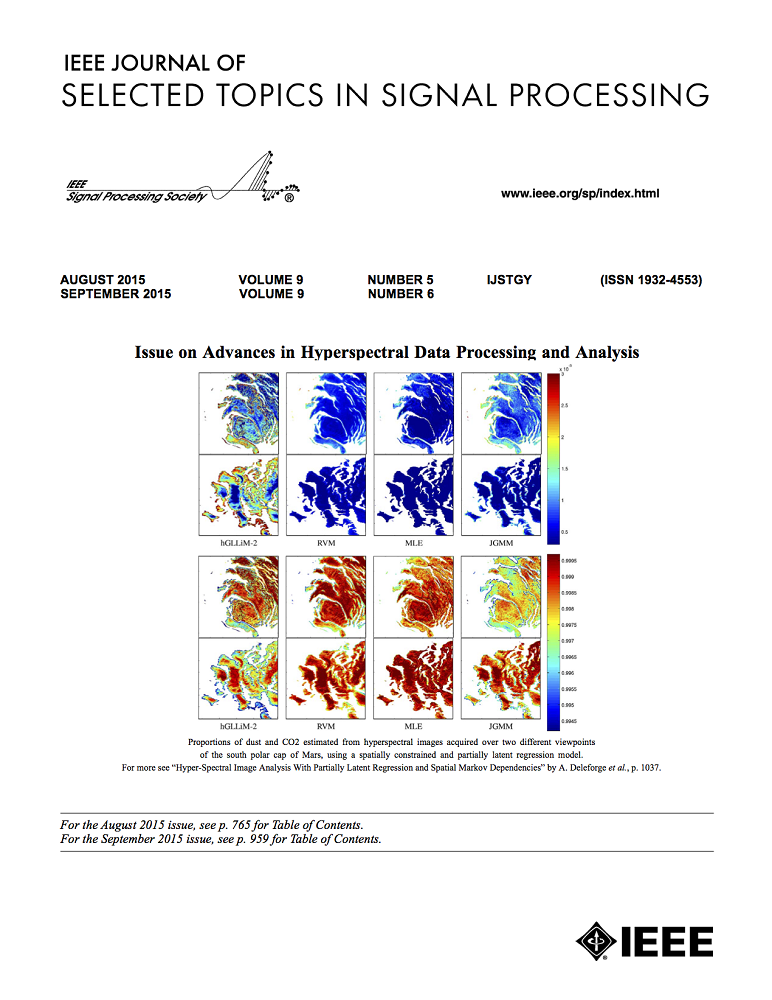IF 8.7
1区 工程技术
Q1 ENGINEERING, ELECTRICAL & ELECTRONIC
IEEE Journal of Selected Topics in Signal Processing
Pub Date : 2024-11-20
DOI:10.1109/JSTSP.2024.3497655
引用次数: 0
摘要
声道发音是语音产生的一个自然、基础的控制空间。发音器官的时空协调与声源相结合,形成了可理解的语音,从而实现有效的口语交流。基于语音的这一生理基础,我们提出了一种新的语音神经编码-解码框架--语音发音编码(SPARC)。SPARC 由一个发音分析模型和一个发音合成模型组成,前者可从语音音频中推断发音特征,后者可根据发音特征合成语音音频。发音特征是声道发音器的运动轨迹和声源特征,可直观解释和控制,是语音产生的实际物理界面。与发音合成器共同训练的还有一个说话者身份编码器,为单个说话者的声音质地提供信息。通过在大规模语音数据上进行训练,我们获得了一个完全可理解的高质量发音合成器,并可泛化到未见过的说话者。此外,说话人嵌入与发音有效分离,从而实现了口音保护零镜头语音转换。据我们所知,这是首次展示通用、高性能的发音推理和合成,表明所提出的框架是一种功能强大的语音编码系统。本文章由计算机程序翻译,如有差异,请以英文原文为准。
Coding Speech Through Vocal Tract Kinematics
Vocal tract articulation is a natural, grounded control space of speech production. The spatiotemporal coordination of articulators combined with the vocal source shapes intelligible speech sounds to enable effective spoken communication. Based on this physiological grounding of speech, we propose a new framework of neural encoding-decoding of speech – Speech Articulatory Coding (SPARC). SPARC comprises an articulatory analysis model that infers articulatory features from speech audio, and an articulatory synthesis model that synthesizes speech audio from articulatory features. The articulatory features are kinematic traces of vocal tract articulators and source features, which are intuitively interpretable and controllable, being the actual physical interface of speech production. An additional speaker identity encoder is jointly trained with the articulatory synthesizer to inform the voice texture of individual speakers. By training on large-scale speech data, we achieve a fully intelligible, high-quality articulatory synthesizer that generalizes to unseen speakers. Furthermore, the speaker embedding is effectively disentangled from articulations, which enables accent-perserving zero-shot voice conversion. To the best of our knowledge, this is the first demonstration of universal, high-performance articulatory inference and synthesis, suggesting the proposed framework as a powerful coding system of speech.
求助全文
通过发布文献求助,成功后即可免费获取论文全文。
去求助
来源期刊

IEEE Journal of Selected Topics in Signal Processing
工程技术-工程:电子与电气
CiteScore
19.00
自引率
1.30%
发文量
135
审稿时长
3 months
期刊介绍:
The IEEE Journal of Selected Topics in Signal Processing (JSTSP) focuses on the Field of Interest of the IEEE Signal Processing Society, which encompasses the theory and application of various signal processing techniques. These techniques include filtering, coding, transmitting, estimating, detecting, analyzing, recognizing, synthesizing, recording, and reproducing signals using digital or analog devices. The term "signal" covers a wide range of data types, including audio, video, speech, image, communication, geophysical, sonar, radar, medical, musical, and others.
The journal format allows for in-depth exploration of signal processing topics, enabling the Society to cover both established and emerging areas. This includes interdisciplinary fields such as biomedical engineering and language processing, as well as areas not traditionally associated with engineering.
 求助内容:
求助内容: 应助结果提醒方式:
应助结果提醒方式:


